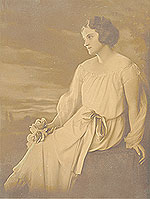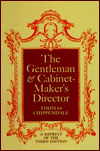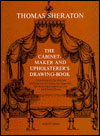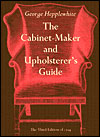The Stamford Historical Society Presents: Best Seats in the House – Chairs from the Charlotte D. S. Cruikshank Collection
a 2004 Exhibit: online sampling and more
Introduction
 Charlotte Dewing Smith Cruikshank was born in 1897 in Sault Ste. Marie, Michigan, the daughter of Colonel and Mrs. Edmund Dickinson Smith of Stamford. When Colonel Smith was sent to the Philippines during the Spanish American War, his wife, Mary Dewing Smith, returned to Stamford with young Charlotte and her brother, Truman, and remained here after Colonel Smith was killed in February 1900 in the Philippine Insurrection.
Charlotte Dewing Smith Cruikshank was born in 1897 in Sault Ste. Marie, Michigan, the daughter of Colonel and Mrs. Edmund Dickinson Smith of Stamford. When Colonel Smith was sent to the Philippines during the Spanish American War, his wife, Mary Dewing Smith, returned to Stamford with young Charlotte and her brother, Truman, and remained here after Colonel Smith was killed in February 1900 in the Philippine Insurrection.
Charlotte began collecting as a very young girl. She loved “little things†such as miniature tea sets and thimbles. On her sixteenth birthday her Aunt Jane, wife of Senator Orville H. Platt, and a collector herself, gave Charlotte a fine mahogany four-poster bed. Her interest piqued, she soon began to collect furniture. The collecting impulse became a consuming passion which remained with her the rest of her life.
At first she collected the more affordable Victorian furniture. As her tastes changed, she grew to appreciate the skilled craftsmanship and simple beauty of early New England pieces. She “loved wood†and developed a keen eye for furniture that utilized a particular wood to the best advantage. Federal period furniture, especially, appealed to her and her collection reflects this preference.
She searched the shops of dealers and attended auctions throughout New England in pursuit of additions to her growing furniture collection. So extensive were her travels that her husband, Douglas, when asked how many miles to the gallon his vintage Cadillac got, fondly quipped “about seven antiques shops.â€
Her chairs are an outstanding example of her collecting zeal. She wanted to acquire at least one of every type made. While she did not realize that ambitious goal, she amassed more than 150 chairs dating from the 17th, 18th and 19th centuries.
Mrs. Cruikshank collected American furniture and early decorative arts at a time when a new appreciation of American antiques was beginning to develop among collectors. It was during the 1920s and 30s that many of the famous private collectors began assembling the vast collections of American furniture and other decorative arts which would become the basis for such outstanding restorations and museums as Historic Deerfield, Deerfield, Massachusetts; The Henry Francis DuPont Winterthur Museum, Winterthur, Delaware; and The Margaret Woodbury Strong Museum, Rochester, New York.
In this same tradition, Charlotte D. S. Cruikshank’s collection made possible the development of The Stamford Historical Society Museum. In 1979 Mrs. Cruikshank’s will was probated, naming The Stamford Historical Society as principal beneficiary. She and her husband wanted her collection to remain in Stamford where it could be enjoyed by future generations.
Chair Styles
Between 1690 and 1840 chair styles changed dramatically. The time periods given here are approximate and refer to the general period a style was popular. There was a great overlapping. City craftsmen, particularly on the East Coast, tended to quickly pick up on new trends from English furniture makers while small town and country joiners continued making chairs considered “out of fashion.†Within each broad category there are many variations and regional characteristics to look for.
William and Mary Style 1690–1725
Introduced to America in the late 17th century, this style reflects the Dutch influence of William of Orange, who with his wife, Mary, became joint monarchs of England in 1689. Trade with China also had its influence as can be seen in the use of cane on seats and backs. The art of japanning, a finishing technique using a hard black varnish to mimic Oriental lacquer, was frequently used.
Chair backs were tall and narrow and were most often caned, rushed or upholstered in leather, as were the seats. Sometimes the back was fitted with split bannisters instead. The crest rail was often elaborately carved, as was the front stretcher. A tapering scrolled foot, called a Spanish foot, was a hallmark of the style. Walnut was a favorite wood because it could easily be carved, but maple was also used.
Queen Anne Style 1725–1755
During this period chair styles changed remarkably. Fluid, curving lines, vase-shaped splats, shell carving and cabriole legs were distinctive innovations of this period. The pad and hoof foot was predominant during the earlier part of the period; later the claw and ball foot gained acceptance. Many people regard the claw and ball foot as distinctly Chippendale, but it was an important part of Queen Anne design, also. These chairs were comfortable. Most of the more sophisticated ones had upholstered seats. Regional and country chairs were frequently painted black or reddish brown and had a rushed seat. They have been called “Hudson River Valley†chairs but were made in several surrounding states.
Walnut was the wood most frequently used, but depending on the area in which a chair was made, other woods prevailed. In New England walnut, cherry and maple were preferred, while in New York and Philadelphia imported mahogany was the wood of choice. Queen Anne chairs were very popular and continued to be made in rural areas up to the Revolution.
Chippendale Style  1755–1790
 Thomas Chippendale was a London cabinetmaker who published in 1754. His designs soon became available to American cabinetmakers who made their own distinctive versions. Many of Chippendale’s ideas came from the Chinese; such as the straight-legged Marlborough legs as well as the use of fretwork. American Chippendale was lighter in form than Queen Anne but was more ornamental. The claw and ball foot was widely used and is a very strong design element in the Chippendale style. Chippendale splats evolved from the Queen Anne style but differ in that the splats are usually pierced in elegant Rococo patterns or beautifully carved. Chair seats generally featured either upholstered slip seats or seats upholstered over the rails. Ladder back chairs with rushed seats were less formal renditions of the style.
Thomas Chippendale was a London cabinetmaker who published in 1754. His designs soon became available to American cabinetmakers who made their own distinctive versions. Many of Chippendale’s ideas came from the Chinese; such as the straight-legged Marlborough legs as well as the use of fretwork. American Chippendale was lighter in form than Queen Anne but was more ornamental. The claw and ball foot was widely used and is a very strong design element in the Chippendale style. Chippendale splats evolved from the Queen Anne style but differ in that the splats are usually pierced in elegant Rococo patterns or beautifully carved. Chair seats generally featured either upholstered slip seats or seats upholstered over the rails. Ladder back chairs with rushed seats were less formal renditions of the style.
Mahogany was the favored wood, although cherry, maple and walnut were not uncommon. Connecticut craftsmen continued to work in cherry while the stylish Newport and Philadelphia makers preferred mahogany for their elegant and skillfully crafted chairs.
Federal Style  1780–1820
 Following the Revolution chair styles became lighter in form and were marked by a delicacy and gracefulness even in the country pieces. This neoclassical style was popularized by two English designers, and , both of whom published cabinetmakers’ and upholsterers’ guides which quickly caught the eye of American craftsmen.
Following the Revolution chair styles became lighter in form and were marked by a delicacy and gracefulness even in the country pieces. This neoclassical style was popularized by two English designers, and , both of whom published cabinetmakers’ and upholsterers’ guides which quickly caught the eye of American craftsmen.
 The cabriole leg of Queen Anne and Chippendale styles gave way to either tapered straight legs or turned legs. Chairs no longer featured splat backs. Instead, shield and heart-shaped backs, as well as rectangular and oval backs, were the distinctive element of the chair and many are finely carved. Veneers were used where appropriate. Inlays of satinwood, bird’s-eye maple and other figured woods were used to provide ornamentation in chair backs and legs. Eagles, vases and trailing flowers (bellflowers were a favorite) are among the decorations found.
The cabriole leg of Queen Anne and Chippendale styles gave way to either tapered straight legs or turned legs. Chairs no longer featured splat backs. Instead, shield and heart-shaped backs, as well as rectangular and oval backs, were the distinctive element of the chair and many are finely carved. Veneers were used where appropriate. Inlays of satinwood, bird’s-eye maple and other figured woods were used to provide ornamentation in chair backs and legs. Eagles, vases and trailing flowers (bellflowers were a favorite) are among the decorations found.
Although mahogany remained the principal wood, Connecticut chair makers continued to use cherry. The Federal style continued to be popular long past its cut off, date and its influence can be seen in the “fancy†painted chairs in this exhibit, albeit in a simpler form.
Empire Style  1815–1840
Empire furniture is frequently described as “Grecian†in style, and many pieces do conform to the shape of furniture used in the ancient civilizations of Rome, Greece and Egypt. The style made its debut in Paris at the beginning of the 19th century but did not become popular in America until about 1815. It was heavier looking than the styles prior to this period.
While other American city and country craftsmen continued to make Federal pieces, New York cabinetmakers engaged in making the new Empire style. Duncan Phyfe was one of the best known of this group and was instrumental in bringing the style into prominence. His workshop produced impressive and expensive versions in all types of furniture. Klismos chairs with lyre and eagle splats, saber-legs with hairy claw feet, and upholstered slip seatsare examples of the artistry of his workshop. Klismos chairs were also made in simpler forms and were made at every price level. Mass production was replacing the craftsmen’s workshops.
Windsor Style  1730–1830
Windsor chairs conjure up a nostalgic picture of homey Colonial interiors. They are one of the most popular styles in America, originating in England in the market town of Windsor early in the 18th century. About 1730 Colonial American joiners took up the style and fashioned their own versions, resulting in a wide variety of forms which can be seen in this exhibit.
Windsor chairs utilized local woods most suited to the purpose needed. Soft pine or tulip was used for seats that were shaped to conform to the human body. Hickory, ash or birch were used for spindles; solid maple was turned into legs. With so many different woods used in one chair, the chairs were painted solid green, red, black, yellow or white to disguise the discrepancies in wood grain and color. Years later, well-intentioned buyers of antique Windsors decided they should be stripped and stained. Traces of paint often remain under the seats.
Sturdy and portable, they were used indoors and out. One reason for their sturdiness was that the seats were made of green wood, which later shrank, making all the joints tight. George Washington liked them so much he had a row of Windsors invitingly lined up on his veranda at Mt. Vernon.
Fancy Chairs  1820–1840
After 1820 painted finishes and stenciled decoration became very popular and were used profusely on so-called “fancy†chairs which were made in the Sheraton style. Depicting landscapes, buildings, or foliate ornamentation, such as leaves and fruit, they brought color and a whimsical touch to American interiors. Sometimes the chairs were given a faux finish of simulated wood graining or faux bamboo turnings. Lightweight and easily moved from room to room, they generally had caned or rushed seats.
Perhaps the most familiar type is the hand-stenciled Hitchcock chair, made by Lambert Hitchcock in Hitchcockville (later Riverton), Connecticut.
The Chairs in the Exhibit
| List of chairs |
|---|
| • William and Mary Painted Side Chair • William and Mary Painted Bannister-back Armchair • William and Mary Bannister-back Armchair • William and Mary Painted Side Chair • One of three similar Queen Anne Painted Side Chairs • One of a Pair William and Mary Maple Side Chairs • One of a Pair Queen Anne Maple Side Chairs • Chippendale Mahogany Roundabout Chair • One of a Pair of American Empire Curly Maple Side Chairs • From a Set of Eight Federal Mahogany Dining Chairs • One of a Pair of Chippendale Maple Side Chairs • Chippendale Mahogany Side Chair • Federal Carved Mahogany Side Chair • One of a Pair of Federal Mahogany Side Chairs • One of Three Similar Windsor Bow-back Side Chairs • Child’s High-Back Windsor High Chair • One of a Pair of Windsor Bird-cage Side Chairs • Windsor Brace-Back Side Chair • Federal Grey Painted Fancy Side Chair • Fancy Chair • Federal Painted Fancy Side Chair • Hitchcock Child’s Side Chair • Chippendale Cherry and Maple Ladder Back Armchiar • One of a Pair of Federal Inlaid Mahogany Side Chairs • Chippendale Mahogany Side Chair |
The twenty-five chairs in this exhibit represent the wide variety of styles to be found in the Cruikshank Collection. The earliest chair, a c. 1680 English William and Mary side chair, illustrates many of the features found in the American adaptations in the 1740s. There are two bannister back armchairs and a leather upholstered side chair. American craftsmen simplified designs and used their own creative ideas to fit the lifestyle of people in the New World.
A dramatic style change is seen in the Queen Anne chairs which have fluid curving lines, cabriole legs, shell carving and pad feet. They were more comfortable than the William and Mary style and enjoyed great popularity in America up to the Revolution. In the meantime, Thomas Chippendale’s English designs crossed the Atlantic and inspired American chairmakers to make some of the most beautiful chairs ever made. An example is the striking mahogany Philadelphia side chair with an upholstered slip seat with pierce-carved splat, cabriole legs, and claw and ball feet. In sharp contrast is a country Chippendale maple chair with a rush seat.
Elegant Federal chairs in designs of Thomas Sheraton and George Hepplewhite feature shield backs and delicate square backs. Upholstered seats reflect the neoclassical style which came into favor following the Revolution.
Popular Windsor styles— including a wonderful Pennsylvania high chair— are on display, as is a selection of painted “Fancy†chairs in the Sheraton style. Decorated with landscapes and foliage, or faux- painted and hand-stenciled, they were a delightful addition to almost any room and were very affordable because of the advent of mass production.
Accessories to the Chair Exhibit
Six looking glasses from the 18th and 19th centuries hang high on the gallery walls, reflecting the beauty of the chairs and adding a glamour of their own.
An early Queen Anne walnut looking glass has the same curving lines as chairs from the period; three glittering gilt and inlaid mahogany Chippendale looking glasses exhibit the ultimate extravagance of the period. Two early 19th century Empire mirrors—which they were known as by this time—have a divided glass plate. In one of the these the upper panel features an eglomisé (reverse painting on glass) scene of a house by a river.
Twelve hand painted plates from a French dessert service are displayed in a cupboard in the gallery. The maker’s label indicates they were made in Paris in the late 19th century.
The looking glasses and plates are from the Charlotte D. S. Cruikshank Collection.
Margaret Bowen
| Books | ||
|---|---|---|
|
by Thomas Chippendale ISBN 0486216012 Paperback  |
The Cabinet-Maker and Upholsterer’s Guide by A. Hepplewhite and Co, Hepplewhite and Company Staff, George Hepplewhite ISBN 0486221830 Paperback  |
) by Thomas Sheraton Paperback  |






